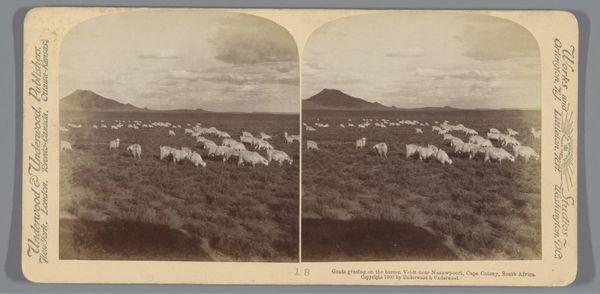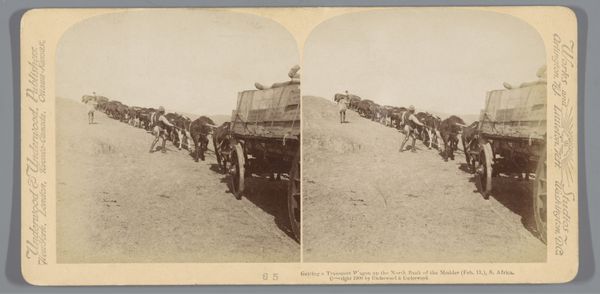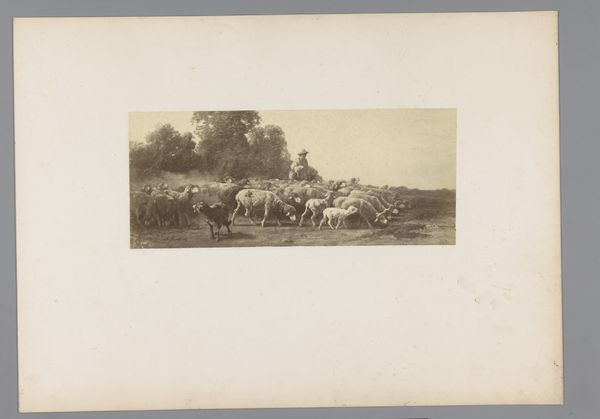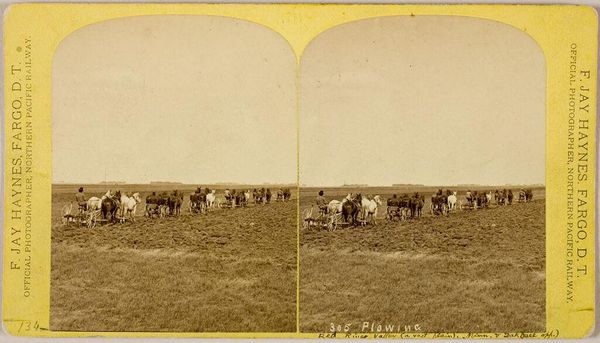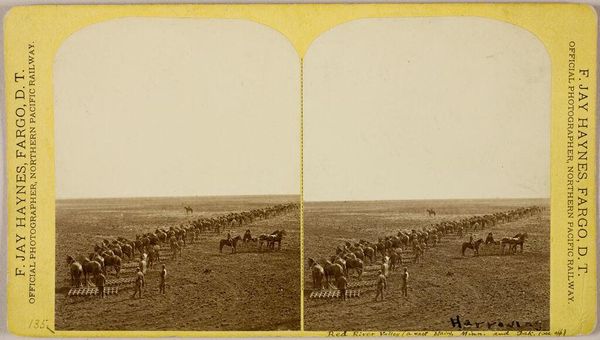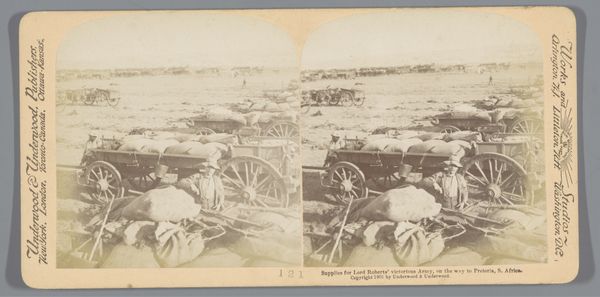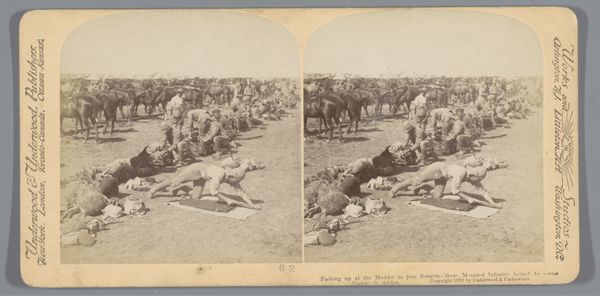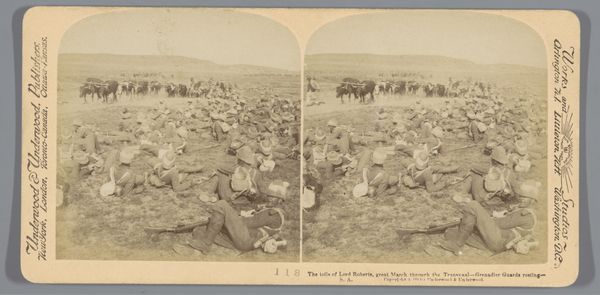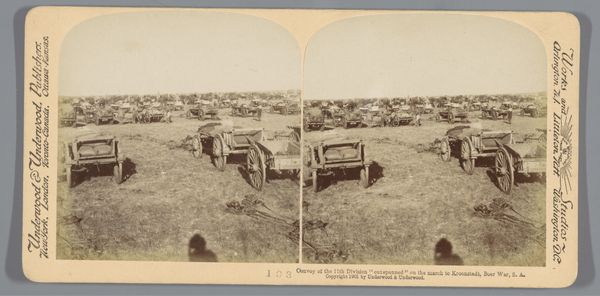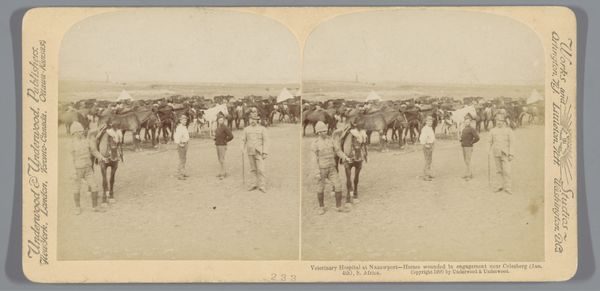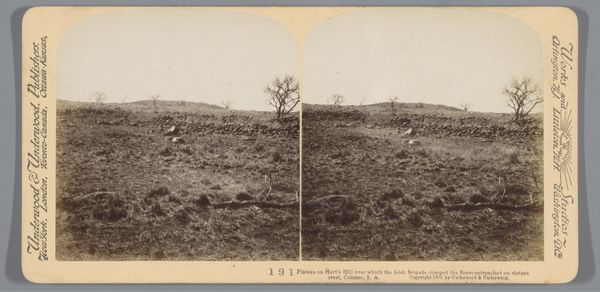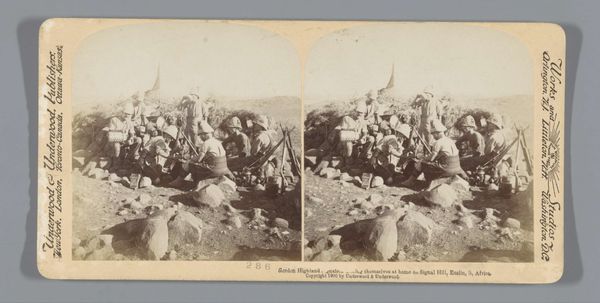
Gezicht op een muur met zandzakken en geiten, vanaf hier is gevochten tijdens de Tweede Boerenoorlog 1901
0:00
0:00
print, photography, gelatin-silver-print
# print
#
landscape
#
photography
#
coloured pencil
#
gelatin-silver-print
#
history-painting
Dimensions: height 88 mm, width 178 mm
Copyright: Rijks Museum: Open Domain
Editor: This photograph by Underwood & Underwood, taken in 1901, shows a low wall topped with sandbags and a few goats milling about. The starkness and emptiness of the scene create a strangely haunting mood. What historical narratives do you think it is conveying? Curator: It presents a fascinating intersection of the domestic and the military. Notice the goats, everyday animals placed amidst the remnants of battle. It forces us to consider how conflict permeates even the seemingly mundane aspects of life. This photograph documents a specific location used during the Second Boer War. But more importantly, it implicates the viewer, who is separated by a great geographical distance, into an immediate experience, one that underscores that all of history touches us even in unexpected places. Editor: I see, it's the unexpected juxtaposition that makes it so compelling. Curator: Precisely. And the widespread circulation of these images, sold as stereo cards, suggests a keen public interest in distant conflicts, effectively turning spectators into participants, shaping public discourse, and solidifying imperial narratives. Consider, for example, how photographic imagery plays a major part in forming public perception today. Does the image itself attempt to romanticize or legitimize a certain narrative around conflict? Editor: It feels somewhat impartial, more like a record than propaganda, perhaps? But the act of distribution itself surely had a political dimension. Curator: Absolutely. It’s in the selection, the framing, and, crucially, the distribution, that ideology is embedded. These seemingly neutral documents helped to reinforce existing power structures and shape public opinion. It makes me wonder what similar types of seemingly mundane and popular cultural ephemera will exist about conflicts of the current era 100 years from now. Editor: That’s a chilling thought! I hadn't considered the sheer power of the photographic gaze in shaping historical memory until now. Curator: Exactly. It highlights how historical images are never just neutral reflections of the past.
Comments
No comments
Be the first to comment and join the conversation on the ultimate creative platform.
